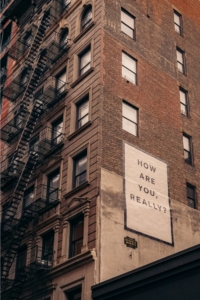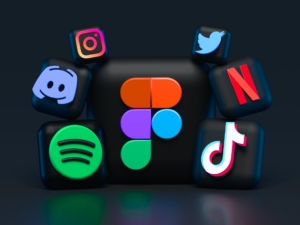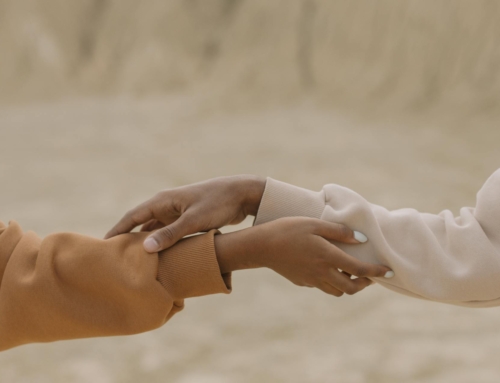At the time of this writing, TikTok is the most downloaded application on people’s phones. But what TikTok self-diagnosis gets wrong about mental health is a big deal, and here’s why.
The Birth of TikTok Self-Diagnosis
The short-form video content on Vine was ahead of its time. It took the internet by storm, amassing a large following and number of subscribers in a short amount of time. However, the success of the platform fizzled out as quickly as it caught on. The world wasn’t ready yet, but over the years – as attention spans grow shorter and shorter – it was the perfect time for TikTok to emerge.
On TikTok over two billion people log in for thirty-second to one-minute videos of dances, tutorials, art, thirst-traps, life hacks, fun facts, comedy skits and the glorification of mental illnesses. That’s right. Young people are using TikTok to self-diagnose serious mental health conditions. Some companies even sponsor the content and funnel viewers to their website to pay for treatment.
It would be forgivable if this was all for raising awareness on mental health issues, but that is not the case. The popular social media platform has been praised for starting important conversations about mental health especially among young people. It has enabled them to learn about mental health conditions and get support from peers going through the same things.
Over the past year, there’s been an increasing trend of teens and young adults using TikTok to self-diagnose conditions such as autism, Dissociative Identity Disorder (DID), Attention Deficit Hyperactivity Disorder (ADHD), Borderline Personality Disorder, Obsessive-Compulsive Disorder (OCD), and Tourette syndrome, among others.
The Problem
TikTok is problematic, not only because the diagnosis should be made by an experienced mental health care expert who’s knowledgeable about important nuances, but because not all TikTok creators post accurate information about mental health issues.
“Not all do,” says Doreen Dodgen-Magee, PsyD, a psychologist based in Lake Oswego, Oregon, and author of Deviced! Balancing Life and Technology in a Digital World. “There are many accounts, hosted by educated, trained, and  licensed professionals where reliable information can be found. But not all posts contain accurate, science-backed information – and many people scrolling through TikTok don’t know this,” she warns.
licensed professionals where reliable information can be found. But not all posts contain accurate, science-backed information – and many people scrolling through TikTok don’t know this,” she warns.
Using an online checklist to confirm symptoms creates a horoscope-like effect. If people see enough of these videos, they can begin to relate to any number of the potential symptoms presented and even begin to manifest those exact same symptoms. The most vulnerable to this are hypochondriacs who are already convinced that there is something wrong with them even if specialists tell them otherwise.
The problem is that psychological illnesses don’t occur that way. For example, just because you urinate often, and frequent urinating is a symptom of diabetes, does not mean you have diabetes. In most cases, a combination of symptoms tells a mental health professional whether or not there is an issue, but the self-diagnosis person only needs two or three to be convinced.
Why TikTok Self-Diagnosis Falls Short
Since the inception of TikTok self-diagnosis, experts have observed an unusual spike in mental health cases in hospitals and behavioral health facilities across the United States. Among the recorded cases, doctors have seen a surge in “physical and verbal tics,” particularly among teenage girls. The commensurate explosion of Tourette-like tics in medical units has every single case being linked to watching countless TikTok videos about people with Tourette syndrome.
These teenagers do not have Tourette syndrome, but, for the most part, they are not pretending to have it either. What they do have is a functional movement disorder as a result of stress and possibly underlying anxiety or depression which may or may not have been properly diagnosed.
Minors between the ages of 11 to 17 are particularly susceptible to social influence. While these TikTok channels can create a sense of community and inclusiveness for this age group, they can easily also be a slippery slope. Treatment involving a series of individualized therapy plans and a two-week detox of TikTok resulted in the patients returning back to normal. The tics were gone—showing just how powerful and influential these TikTok videos can be.
 Social media is a first line of information for a huge demographic, and many viewers take that information at face value. Few millennials and Generation Z go beyond checking social media or researching beyond sensationalized news headlines, which makes the information received on social media extremely valuable
Social media is a first line of information for a huge demographic, and many viewers take that information at face value. Few millennials and Generation Z go beyond checking social media or researching beyond sensationalized news headlines, which makes the information received on social media extremely valuable
Dr. Akua Boateng, Ph.D., a Philadelphia-based licensed psychotherapist who specializes in individual and couples therapy, points out the grave responsibility influencers have in sharing this information responsibly.
According to John F. Tholen, Ph.D., a retired cognitive psychologist in Seal Beach, California, and author of Focused Positivity: The Path to Success and Peace of Mind, “The danger of social media self-diagnosis is that it is frequently incorrect.”
Dr. Tholen, having extensive experience in treating post-traumatic stress disorder (PTSD) with cognitive behavioral therapy, says, “As any professional can attest, making a psychiatric diagnosis is a complicated process that often requires subtle distinctions. There is a big difference between experiencing symptoms and having a disorder.”
While people can experience symptoms mainly associated with various mental health disorders, they are usually less severe or persistent compared to what is required for a definitive diagnosis. For example, a lot of people experience subtle shifts in their mood throughout different times of the day, but the mood shifts are not jarring enough to meet the observed criteria needed for a diagnosis of mood disorders like depression or bipolar disorder.
“To be diagnosable, a psychological or personality disorder must interfere significantly with our ability to function in major aspects of life, such as relationships, school, work, or the ability to experience pleasure,” Tholen says.
Furthermore, using the previous example, a major danger of psychiatric self-diagnosing is overlooking a treatable underlying physical condition, such as hormonal imbalances, thyroid issues or heartbeat irregularity. The symptoms of these two vastly different conditions can sometimes look the same.
How to Vet Mental Health TikToks
Although there are many videos made by trained mental health professionals that you will come across as you’re scrolling through TikTok, you will also likely encounter a lot of attention-seekers, mixed in with genuine firsthand experiences from people who deal with mental health issues in real life.
A lot of these experiences can be helpful, as long as they’re providing true information, but they have their limitations. It is important to recognize this and to make sure that you are verifying information you are reliant upon regarding your own mental health.
You can utilize the features of the platform to your advantage by customizing your feed to only show content makers you trust to provide a supportive community and information that is reliable.
You should ask yourself the following questions as a way of fact-checking mental health information found on TikTok:
- “Does this person provide any evidence for their claims, or are they making bare assertions?”
- “Is the person’s thoughts, ideas, or opinions based on more than anecdotal experience?”
- “Is the information being shared backed up by other reliable and high-quality sources, like scientific studies?”
- “Is the content sponsored by anyone who might influence their posts?”
- “Have I visited my doctor to eliminate the possibility of medical factors that could be causing your symptoms?”
How to Get a Reliable Mental Health Diagnosis
If you require assistance to get a diagnosis for mental conditions like borderline personality disorder, bipolar disorder, or ADHD, feel free to reach out to our reception team to schedule an appointment with me or one of the other counselors in the online counselor directory.
Knowing how to get a reliable diagnosis is the first step to getting the help you need. If you suspect that you may indeed have a mental condition, the best step is to seek confirmation from a professional. We would be happy to help.
“Popular Apps”, Courtesy of Alexander Shatov, Unsplash.com, CC0 License; “How Are You Really?”, Courtesy of Finn, Unsplash.com, CC0 License; “Phone Users”, Courtesy of Camilo Jimenez, Unsplash.com, CC0 License; “Walking Down the Road”, Courtesy of Emma Simpson, Unsplash.com, CC0 License













